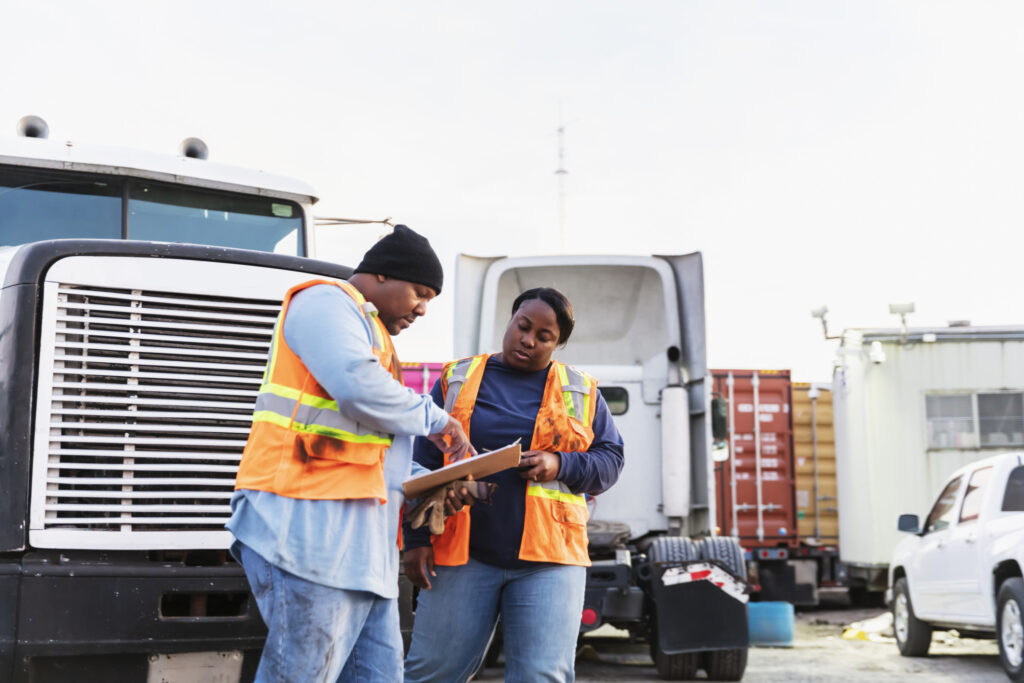5 tips to make fleet yards safer
Trucking-related injuries and deaths are not limited to the open road. Many happen much closer to home – notably in the fleet yards where drivers and moving equipment cross paths.
Here are five tips to help.

1. Train, enforce, repeat
Proper safety training, enforcement, and protocols are fundamental to minimize dangers in fleet yards. Ben Scipione, director of health and safety at Paramount Safety Consulting, says employers are responsible for conducting general and on-site specific training for staff at least every three years.
But he argues instructors are often not qualified to conduct training in the first place. “People pay $10,000-12,000 for certificates, and some can’t even read the Green Book [documenting Ontario health and safety rules]. Employers are stuck hiring such personnel, and it’s ‘blind leading the blind’ type of thing,”
Many accidents could be avoided if Occupational Health and Safety Act rules were strictly enforced, he says.
Even though the recommended speed in a truck yard is around 7-10 km/h, for example, Scipione sees speed limits vary from 10 to 20 or 25 km/h. Such limits only seem to get monitored or reduced when there’s an accident, he adds.
2. Increase visibility and predictability
The risks of collision are always higher in a limited space like a fleet yard, where there’s a constant volume of equipment, trailers and people crossing paths, says Norm Kramer, warehouse and distribution consultant at Workplace Safety and Prevention Services (WSPS) Ontario.
While not every hazard can be eliminated, both Kramer and Scipione agree that many risks can be managed. Truck yard layouts, clear markings and signs, and risk assessments on the employers’ part, will help reduce risks by separating pedestrians from the vehicles and equipment.
Because drivers often have to move around the yard, Kramer says it is recommended they wear reflective clothing at all times, especially in poorly lit environments. He recalls one worker who was injured while cutting through the yard to get to a smoking area. “It’s a common problem,” he adds.
To avoid incidents like that, Scipione says high pedestrian traffic areas should be isolated by physical barriers. Kramer adds that crossing areas should also be highly visible and well-lit, especially in low-light conditions.
Clear surface markings, signs, extra mirrors, as well as safe and danger zones should all be clearly identified through a yard plan, Scipione says, adding that such plans should be presented to drivers who are working in the locations for the first time.
3. Maintain eye contact with drivers at all times
Eliminating blind spots can be tricky at times. Kramer points to the space right in front of a truck bumper as just one example.
It’s why maintaining eye contact with any driver is a ‘golden rule’ for everyone in the yard – including spotters, Kramer adds. And any time a driver loses sight of the spotter, they should immediately stop the vehicle.
4. Enforce visible signals
Audible signals can be missed in noisy environments, making hand signals with spotters particularly important. It’s the same reason Scipione likes to see flashing white lights on reversing equipment.
“On a job site, when everything is beeping around you, it gets squashed in your mind. But with a white flashing LED light you might be ahead of the game.”
5. Commit to the GOAL
While yard owners and employers are responsible for ensuring safety, drivers share in the responsibility. Kramer says every driver should commit to the ‘GOAL’— Get Out And Look to assess all the risks.
“Make sure you have clear visibility and in a timely manner. Don’t go look, have coffee for 10 minutes, and then leave.”
Surroundings in a fleet yard can change very fast, Kramer says, and having a real-time understanding of both people and equipment movements can prevent many incidents.
Have your say
This is a moderated forum. Comments will no longer be published unless they are accompanied by a first and last name and a verifiable email address. (Today's Trucking will not publish or share the email address.) Profane language and content deemed to be libelous, racist, or threatening in nature will not be published under any circumstances.